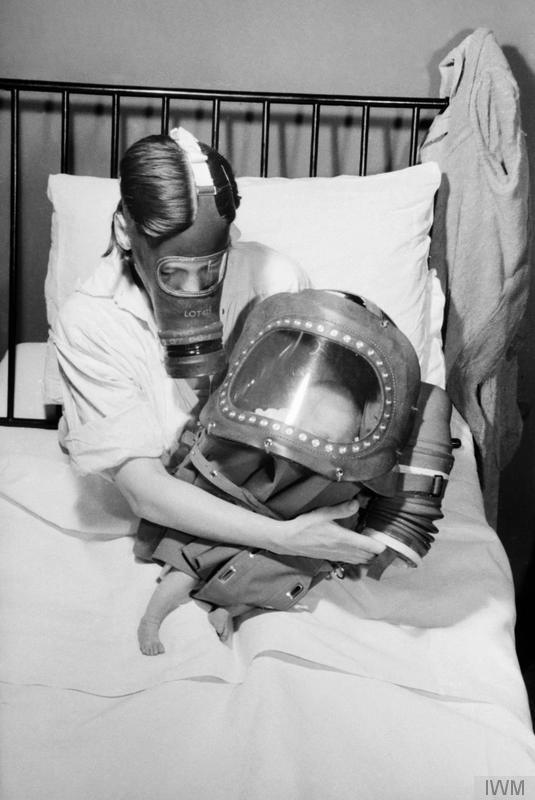Poison Gas and World War Two
Poison gas was used with terrifying effect in World War One, and there was a huge fear during World War Two that it would be used again. The British government issued everyone with gas masks and gas masks drills turned into a routine. However, poison gases were never used in battle during World War Two.
World War One gases were crude but effective and all still available in 1939. The Italian army used mustard gas during the Abyssinian campaign (1935-6). However, by 1939 more sophisticated poison gases had also been developed. Chlorine was overtaken by phosgene and carbonyl chloride: choking gases which caused damage to the respiratory system. Potent tear gases were also available: Adamsite caused respiratory problems, vomiting and nausea as well as the normal symptoms of tear gas. Lewisite was a more severe form of mustard gas. Like mustard gas, it caused skin blistering, but it also caused respiratory problems and pneumonia.
Cyanide, carbon monoxide and cyanogens chloride were all to be feared much more than the other gases. All of these substances affect the blood’s ability to absorb oxygen, causing rapid death.

Governments in World War Two also had access to nerve gas. German scientists developed one of the original types called Tabun. Nerve gases fight the nervous system, causing symptoms of nausea, vomiting, muscular twitching, convulsions, cessation of breathing and death. Other types of nerve gases were Sarin and Soman - Soman is particularly deadly: the victim had convulsions seconds after inhaling the gas.
It was estimated by the US Army Manual TM 3-215 that Soman’s victims would be dead within a mere two minutes.
Warring countries stockpiled poison gas during World War Two. The Germans had 7,000 tons of Sarin alone by 1945: this was enough to kill occupants of 30 cities equal to the size of Paris. The Americans also stored considerably large quantities of poison gases. Britain performed an experiment with anthrax on remote Scottish islands to examine its effects on animals.
With such terrifying and potent weapons at hand, why were poison gases not used during World War Two? As was the case with nuclear weapons during the Cold War, the fear of retaliation - possibly with even more dangerous chemical weapons - deterred governments from using poison gases. Winston Churchill said that if Nazi Germany used chemical weapons, "We would retaliate by drenching the German cities with gas on the largest possible scale." Hitler was tempted to use tabun as the Red Army approached Berlin, but Albert Speer and Otto Ambros (a nerve gas expert) persuaded him against it, arguing that the Allies could retaliate with similar weapons.
See also: Rocket Technology and World War Two
MLA Citation/Reference
"Poison Gas and World War Two". HistoryLearning.com. 2024. Web.
